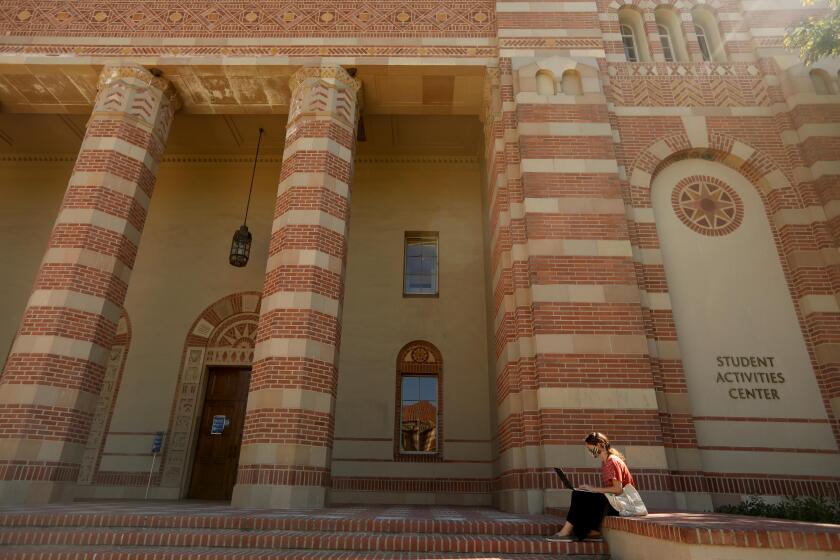Evacuations failed and 85 people died during California’s deadliest wildfire. What are lessons for L.A.?
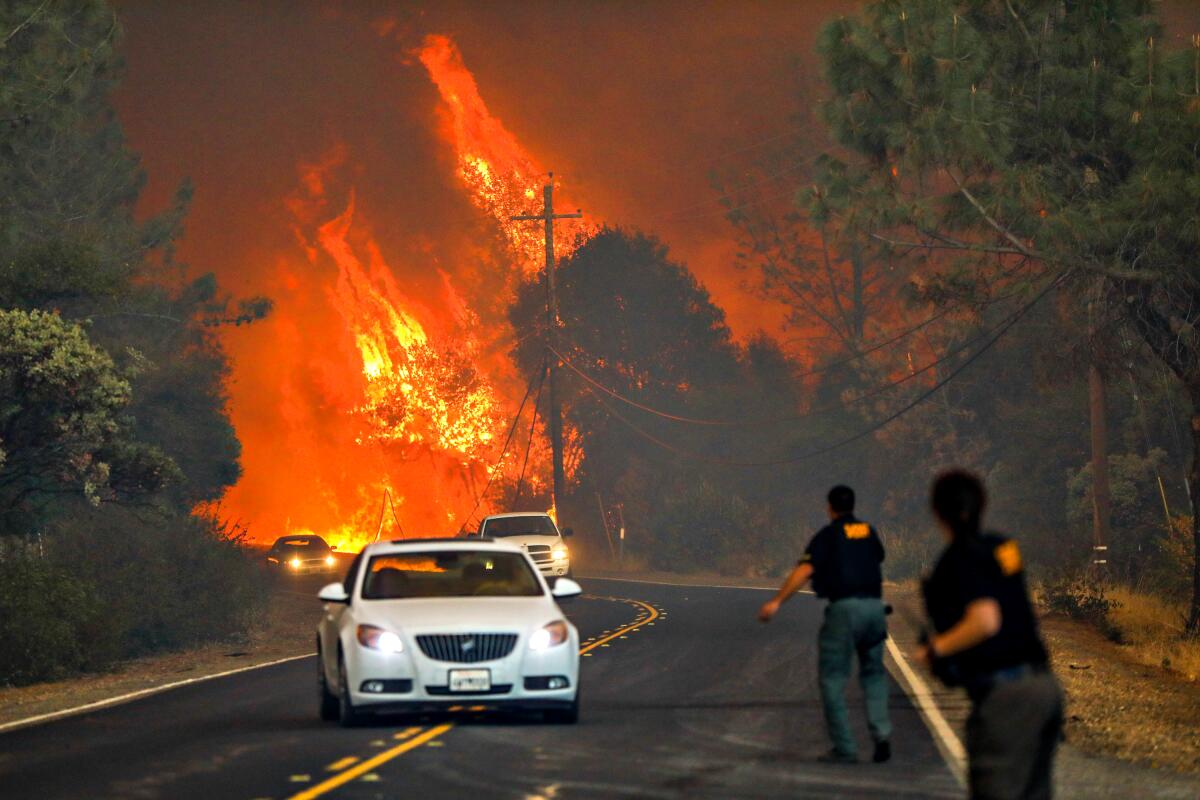
- Share via
A spark from a malfunctioning transmission line ignited a blaze. Before long, gale-force winds whipped the flames into a mighty firestorm that tore through the Sierra Nevada foothills at the rate of one football field a second.
By 8 a.m. Nov. 8, 2018, when embers began to rain down on the town of Paradise, most residents had not been ordered to evacuate — even though an hour and a half had passed since the fire was first reported in a remote wooded area seven miles away.
Many fled before they got official evacuation warnings or alerts. As thick smoke and orange sparks filled the air, roads out of Paradise became gridlocked. Hundreds abandoned their cars and tried to outrun the fire on foot.
In the end, 85 people died, making the Camp fire the deadliest wildfire in California history.
Six years later, how that Northern California community responded to the botched evacuations offers lessons for Los Angeles County, where wireless evacuation alerts to western Altadena came nine hours after the Eaton fire broke out. A Times investigation in January found that of the 17 confirmed deaths, all occurred on the west side.
Get the In Case of Fire newsletter
As the threat of wildfires increases, we want to help you be ready. We’ll guide you through advance preparations and what to do if disaster strikes. Emails will land in your inbox every Thursday for seven weeks.
You may occasionally receive promotional content from the Los Angeles Times.
As Butte County’s sheriff, Kory L. Honea was responsible for evacuating people to safety. He was strongly criticized for not acting sooner to alert residents.
“We had absolutely no evacuation orders,” Leigh Bailey, a resident of Magalia, just north of Paradise, told The Times in 2018. “No call, no emergency text, nothing — and neither did anyone I know.”
Fewer than a quarter of Paradise’s 27,000 residents received official evacuation orders via phone. A 2020 after-action report found just one trained staffer was managing alerts during the first 16 hours of the fire, the county struggled with the latest Wireless Emergency Alerts technology and did not sufficiently test its new system for a worst-case scenario.
Honea has since overhauled his county’s alert and warning system. In an interview with The Times, Honea described the lessons he learned from the Camp fire and offered advice for Los Angeles officials after the Palisades and Eaton fires killed 29 people.
“I do get a sense of PTSD when I see these things going on,” Honea said of watching news coverage of evacuation failures in Pacific Palisades and Altadena.
“The task of alerting people to threats and providing them with information is an incredibly complex process,” Honea said. “Unfortunately, a lot of citizens don’t understand how complex that is — and for that matter, a lot of government entities, I don’t think, are truly prepared.”
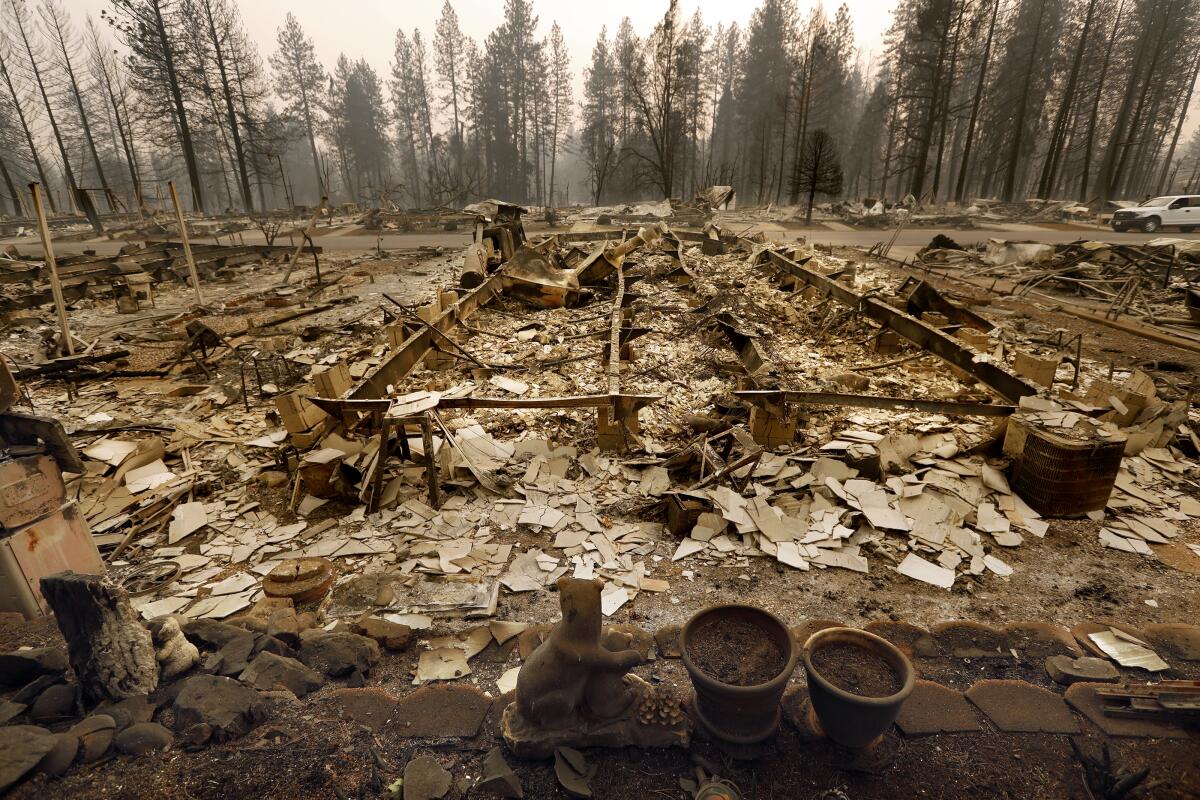
Evacuate early
Most people think of wildfires as moving in a linear form, with the fire’s fast-moving head consuming communities. But Honea said the Camp fire taught him that strong winds can cause fires to skip and hop across a community, carrying burning embers to areas more than a mile away.
On the morning of Nov. 8, a fire chief made the call via radio to evacuate the eastern side of Paradise at 7:46 a.m. When fire was first reported in Paradise at 8 a.m., most residents made their getaway before they received any official alerts.
Now, Honea said, he tends to issue alerts earlier.
“The ideal would be to alert them well before embers actually start falling,” he said, “because once that happens, you know you’re already behind the eight ball.”
Honea isn’t the only local California official who has been slow to alert residents with mass wireless alerts. When the 2017 Tubbs fire swept through Northern California’s wine country, officials in Sonoma and Napa counties decided not to send mass wireless alerts, fearing they would cause countywide gridlock and panic. Twenty-two people died.
Such practices — and the subsequent loss of life — led the California Governor’s Office of Emergency Services in 2019 to establish statewide Alert and Warning Guidelines. They urge local officials to issue alerts and warnings when there is “an imminent threat to life, health, or property.” Even if a threat might not be imminent, the guidelines recommend that warnings can help “communicate that threat out to the public so that they may be better prepared.”
“Fear of triggering ‘panic’ is not a valid reason to delay or avoid issuing a warning,” the guidelines state. “‘Mass panic’ very rarely occurs as the result of a warning message.”
When weighing how soon to alert an area, Honea said, he looks at population density, road infrastructure and topography. Paradise, a town built on volcanic ridges with a maze of dead-end roads offering few ways in and out, was particularly difficult to evacuate.
Butte County has also taken steps to keep and update a list of vulnerable residents — people with mobility issues or who are unhoused — so emergency workers can try to notify them ahead of a disaster and arrange for transportation.
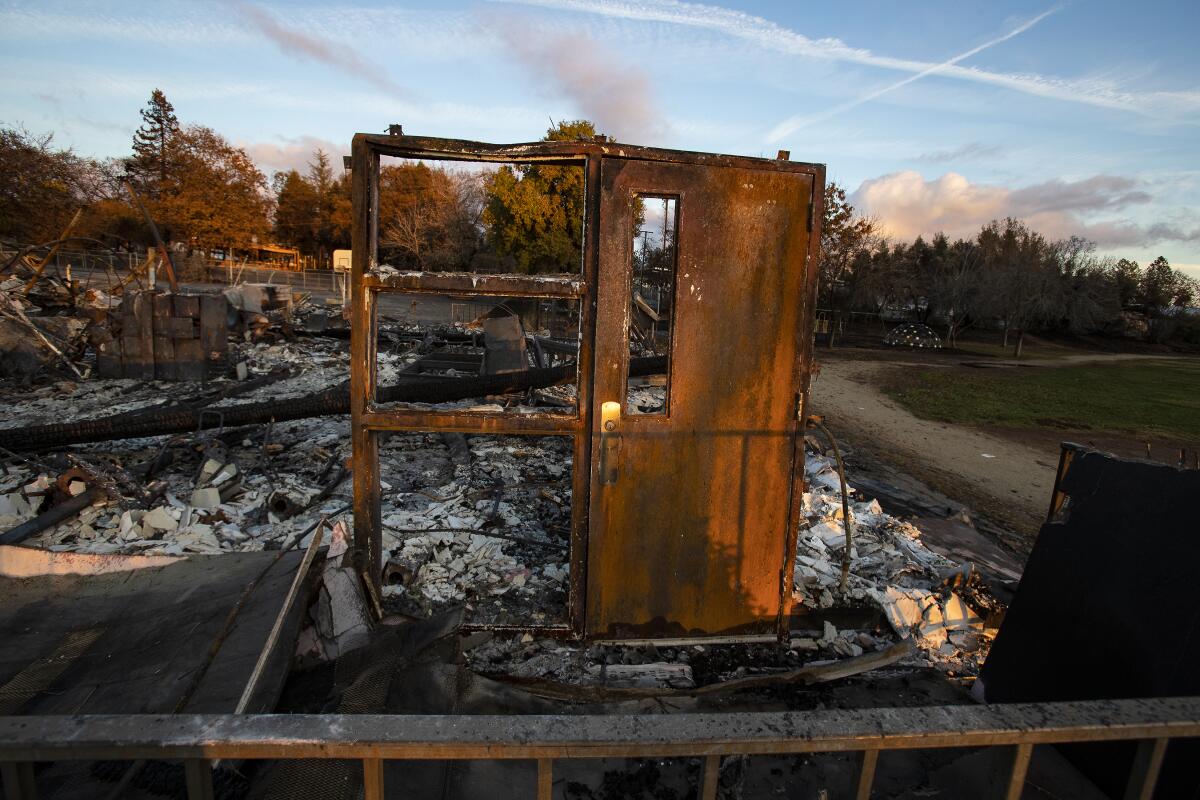
Create a team with clearly defined roles
Before the Camp fire, Butte County relied on its dispatch center to push out alerts. But the county’s small team was swiftly overwhelmed, Honea said, as they tried to craft and push messages in a timely manner while answering 911 calls and talking to responding units via radio.
A 2020 after-action report into the Camp fire found that the county had five people trained to operate its mass alert system, but one was on vacation when fire broke out Nov. 8 and another was evacuating family. That left two dispatchers answering calls in the initial two hours of the fire and just one staff member crafting and sending dozens of mass alerts for the entire county.
After the Camp fire, Honea created a separate alert and warning team: 25 people — search and rescue team volunteers and non-sworn civilian staff members — are trained to push out alerts.
Message across multiple platforms
For Honea, the most effective way to urge people to evacuate is for a uniformed law enforcement officer to go into neighborhoods and knock door to door. But in a fast-moving disaster, there is just not enough time.
“There are times when, literally, there are not enough law enforcement officers and firefighters in a particular area,” Honea said. “I think that’s clearly what transpired in the Palisades and Eaton fire situation.”
In an age when most people are glued to their phones, wireless cellphone alerts can be a vital way to spread news quickly, Honea said. But such technology can also be vulnerable if cell towers go out or if there is a software error.
“There’s no guarantee or foolproof system,” Honea said. “But what we’re hoping is that with our team, we’re in a better position to make sure that all of the areas that need to be warned or evacuated are, in fact, being warned or evacuated, and then we monitor that as we go.”
Butte County’s warning and alert team has some people sending notifications via Facebook, X and Instagram, others by news releases and communication with traditional media partners. Alerts are sent via the CodeRED emergency mass notification system and IPAWS, the Federal Emergency Management Agency’s national system for local alerting that sends Wireless Emergency Alerts to the public through mobile phones and uses the Emergency Alert System to transmit information via radio and television.
In addition, Honea said, somebody manages the infield response of deputies who knock on doors.
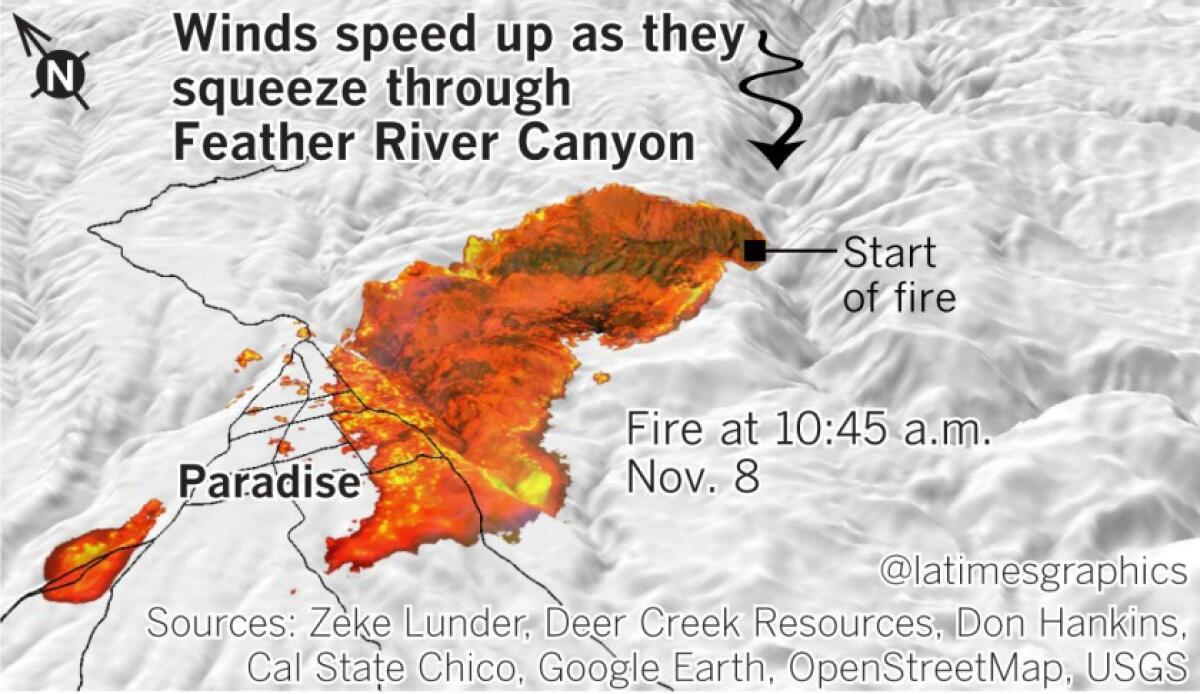
Train and practice regularly
After the Camp fire, investigators found that Butte County did not sufficiently test its mass notification systems to prepare for the worst-case scenario.
After switching to a new mass notification software system in 2017, the county did not dedicate enough time to practice using it, the 2020 after-action report found. When fire broke out Nov. 8, 2018, the CodeRED system integration that allowed officials to send IPAWS alerts failed, but staff did not realize it until the next day.
Now, Honea said, his alert and warning team meets monthly to conduct mock trainings, ask themselves what zones they will issue evacuation orders to and practice tailoring pre-written messages to specific areas. They also rehearse accessing various platforms, making sure their logins for social media and IPAWS accounts are working.
“They do everything they need to do, short of actually pressing the final Send button,” Honea said.
Officials are constantly learning
Even after the Camp fire, Butte County has not always sent mass alerts promptly.
In 2020, county officials were criticized again for issuing late evacuation warnings and orders during the North Complex fire.
But since then, Honea said, the biggest, most recent test of his ability to respond to a major fire was the July 2024 Park fire that ignited in Chico’s Bidwell Park.
Honea decided to evacuate the tiny mountain town of Cohasset, even though the fire was still many miles away.
Within about an hour, Honea said, the county put out initial warnings. Then, it issued evacuation orders. As the fire progressed, officials updated the orders and warnings.
The fire did sweep through Cohasset, destroying dozens of structures. But no one died.
“As a sheriff with responsibility for alert and warning evacuation, that’s my primary goal,” Honea said. “We were able to get everybody out.”
Still, Honea considers the dangers of over-warning. If people don’t see the threat, he said, they immediately start pushing back to open it back up.
“There is this constant dynamic that you have to contend with, where you are alerting people, warning them, making the appropriate orders, but not doing so to the point where people stop paying attention to you, because they have lost faith in your ability to assess the risk.”
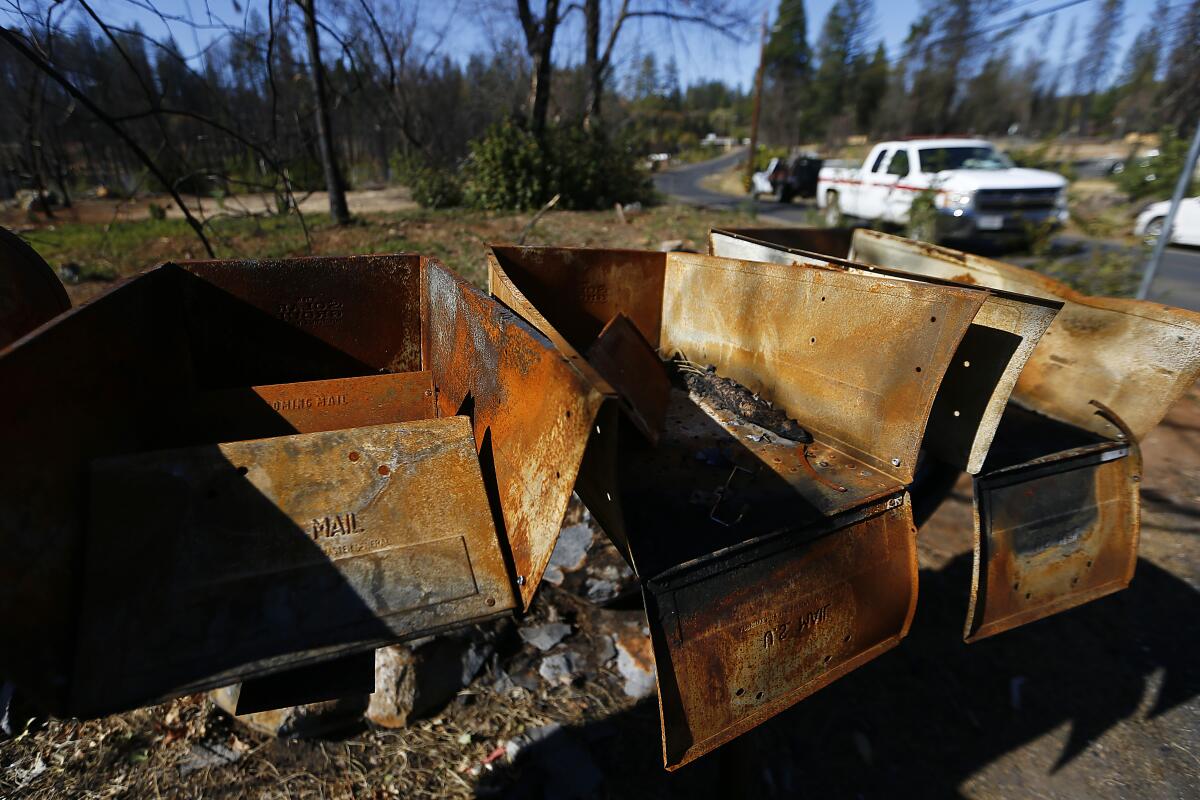
The public should play a more active role
No matter how many platforms officials use to send alerts, Honea said, some people will not heed warnings.
But after the Camp fire, Honea said, it had become easier for him to issue evacuations because many residents have grown accustomed to the threat of deadly fires and taken steps to prepare.
“They’re more apt to listen to us,” he said.
Honea said he was not sure that residents of a densely populated metro region such as Los Angeles would have listened, before the Palisades and Eaton fires, to official calls to evacuate many hours or a day ahead. They might have assumed the chances of fire spreading through the city were remote.
“If you’ve never been through it, it’s hard to really imagine what it’s like to go through it,” Honea said. “Now people understand. Once the fire takes hold in a populated area with all these buildings and structures, it can really take off.”
More to Read
Sign up for Essential California
The most important California stories and recommendations in your inbox every morning.
You may occasionally receive promotional content from the Los Angeles Times.








